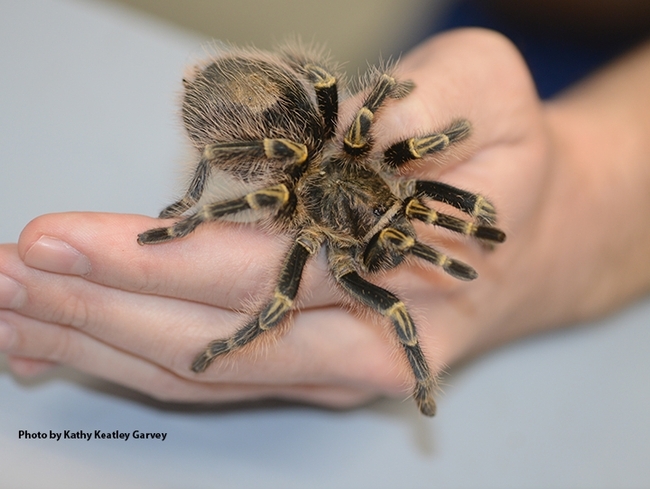
With Halloween coming up I am seeing lots of scary faux spiders among front yard Halloween decorations. I must admit I am guilty of feeding into the arachnophobia that so many people have by placing a big fake hairy tarantula in my yard.
Fascinating Creatures
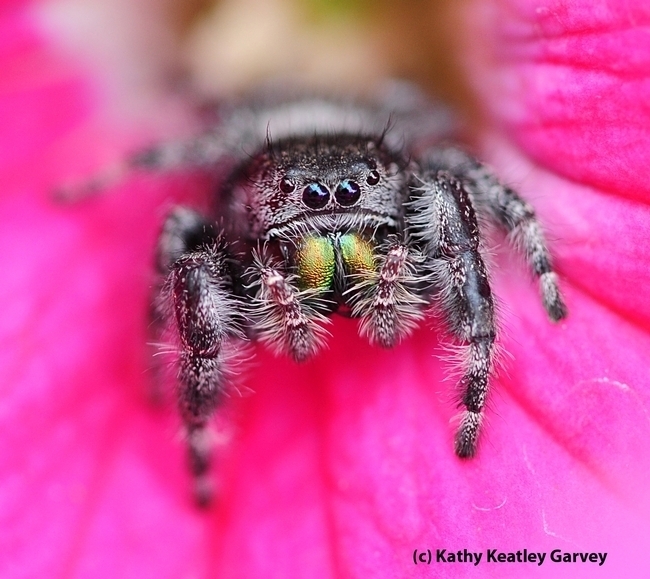
Most spiders are solitary creatures, but some form groups and even cooperate in brood care, caring for other spiders' offspring.
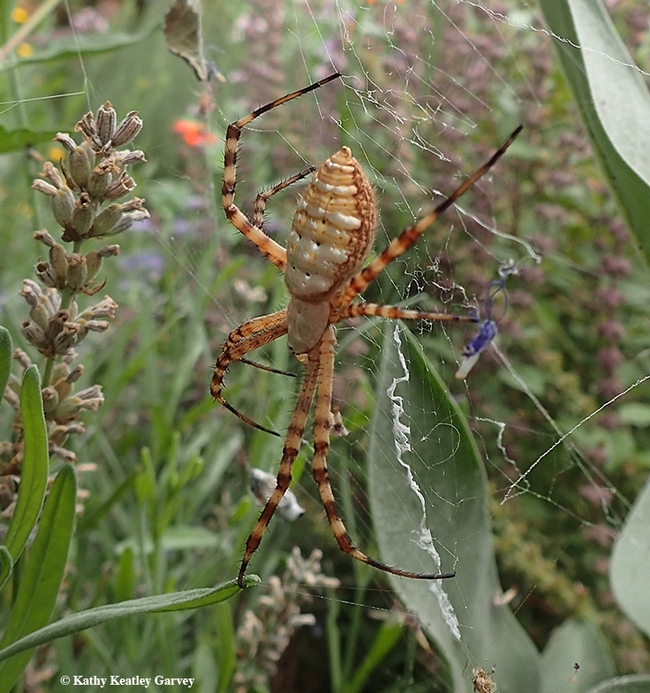
Not all spiders spin webs but those that do can create an incredible assortment of web designs, depending on the species, including spiral orbs, funnels, tubular, or ground sheets.
In some cases, two or more males will perform for a female to compete for her favor.
Some drop their silk to act as parachutes so they can drift on the slightest breeze
While spiders do not have brains in the traditional sense, a type of jumping spider appears to remember similar prey it has encountered, using trial and error to determine what works in capturing it.
Common and Beneficial
Spiders are the most common miniature living things living in our homes (besides micro-organisms). We are seldom aware of them because they conceal themselves in hidden spots (thus camouflaging themselves from their prey), tend to be active at night, and avoid humans. After all, we are much bigger than they are!
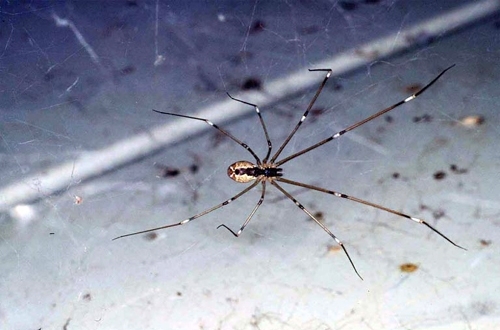
Spiders are beneficial organisms because they feed on common indoor pests such as mosquitoes, flies, roaches, earwigs, and moths. An additional benefit: many of the indoor pests that spiders consume can transmit diseases, i.e., mosquitoes, fleas, flies, and cockroaches. If left alone, spiders will consume most of the insects in your home, thus providing effective pest control.
Spider Bites
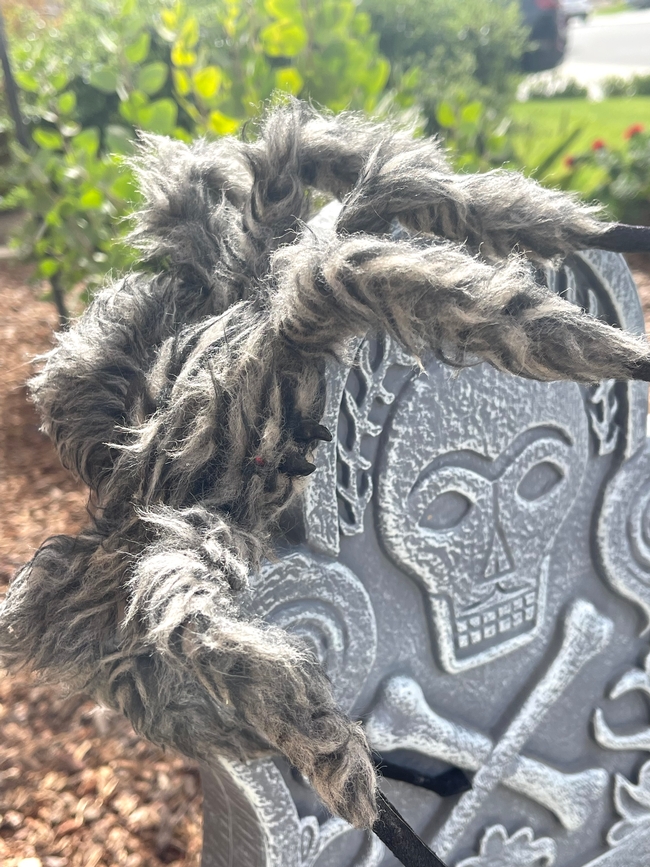
The jaws of most spiders are too small to bite humans. Of those that can bite, they will bite only if provoked, but very few spider bites are dangerous to humans. If you are bitten, the bite area may swell slightly and itch.
The adult female black widow is the primary spider in California capable of seriously injuring people. If bitten, remain calm and seek medical help.
Contrary to common myth, the brown recluse spider does not reside in California.
Managing Spiders
If you do have a spider issue around your home, the most effective way to manage them is to do regular housecleaning. Sweep or vacuum up their webs both indoors and outdoors, and prevent clutter build up that can provide hiding places for them both indoors and outdoors. If you do come across one, capture it in a jar and release it outside in an out-of-the-way spot. Avoid using pesticides since the chemicals will also kill other beneficial insects.
Appreciate Spiders Beneficial Role and Help Protect Them!
I will continue to put out my big “scary” tarantula out with the Halloween décor because spiders are so awesome. However, I do not put out the fake webbing, because like real spider webs, they can trap beneficial insects, spiders, and even small birds such as hummingbirds.
I will continue to allow spiders to share my home and garden, so they can do their crucial work of reducing pests. I much prefer having a few spiders around than mosquitoes, flies, moths, or cockroaches!
You do not have to love spiders like I do, but I hope you can appreciate the vital role arachnids play in our homes and gardens, and generally let them be.
References:
Spiders: https://ipm.ucanr.edu/QT/spiderscard.html
Pests of Homes, Structures, People and Pets: https://ipm.ucanr.edu/PMG/PESTNOTES/pn7442.html
Denise Godbout-Avant has been a UC Cooperative Extension Master Gardener since 2020.
- Author: Denise Godbout-Avant

Why Are People Scared of Spiders?
One possible reason for people's fear of spiders is they are so different from the rest of nature, which Hollywood and the media have exploited.
Spiders are arachnids, a class of invertebrate creatures, which also includes mites, ticks and scorpions. Unlike insects, arachnids have eight or more legs, with two major body parts (insects have three), a fused head and thorax called the cephalothorax, and the abdomen.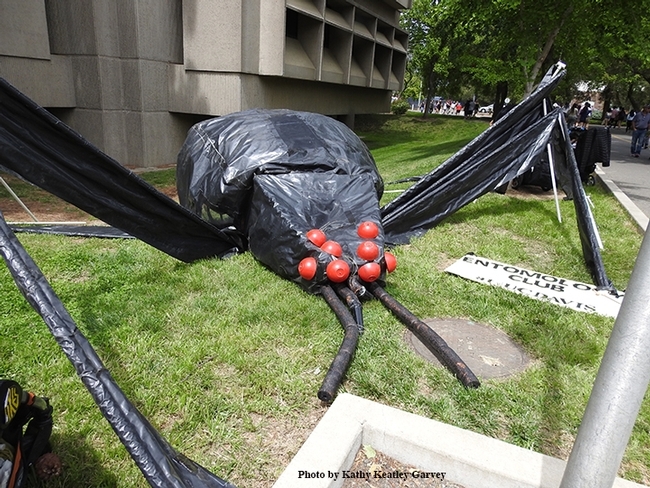
Like mites, ticks and scorpions, most spiders are venomous, using venom to catch/kill their prey. However, the jaws of most spiders are too small to penetrate human skin. Only those spiders whose venom can cause a severe reaction are called “toxic” spiders.
Spiders in the World and California
Spiders have been around a long time – fossilized spiders have been found in 318-million-year-old rock. Today there are about 40,000 types of spiders in the world, on every continent except Antarctica. They range in size from a miniscule 0.02 inches (0.5 mm) to hairy tarantulas up to 3.5 inches (90 mm).
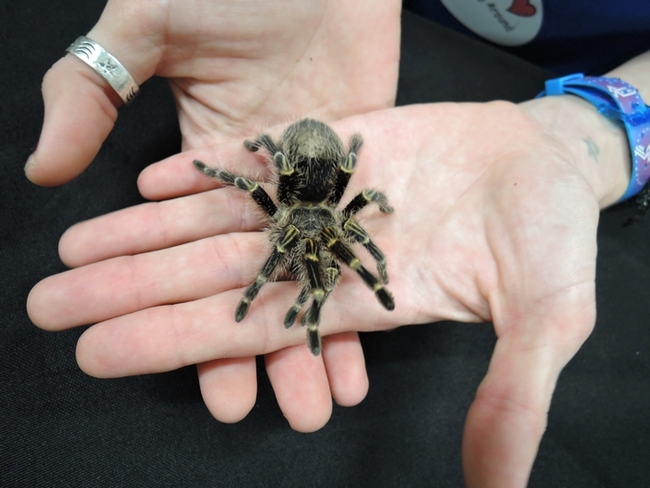
- California has quite a few tarantula species, none of which are venomous. They tend to be long-lived, and use silk to line their underground burrows.
- Orb weaver spiders are often large and colorful. Along with their distinctive, sizeable, elaborate webs they are easy to spot. Their venom is harmless to humans.
- Sheet web spiders are small brown spiders who build messy sheets of webbing, often on the ground. Their venom is harmless to humans.
- Cellar spiders, aka “daddy long legs” initially came from Europe, have long skinny legs, and often hang upside down. Their venom does not harm humans.
- Wolf spiders are free ranging predators who don't build webs and are harmless to humans.
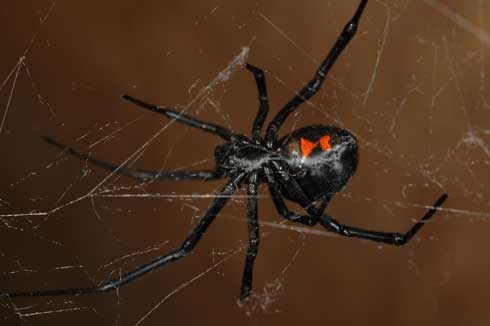 Female Western black widow spider, Rick S. Vetter, UC Riverside.
Female Western black widow spider, Rick S. Vetter, UC Riverside.
Only four species of spiders in the world are really dangerous to humans: Sydney tunnel web spider (Australia), Brazilian wandering spider (Brazil), African sand spider, and widow spiders (global).
California's widow spider is the well-known adult female western Black widow (Latrodectus hesperus).
Their web is sticky, irregular and tough-stranded. During WWII widow silk was used to make the crosshairs in gunsights. Widespread in California, with as many as 20-30 per urban/suburban property, Black widows are found in the holes, crevices, trash, and clutter of human structures. Her distinctive shiny black body with a bright red hourglass on the underside of the abdomen is a warning signal to others which makes her easy to identify and thus avoid.
Misinformation on Spider Bites
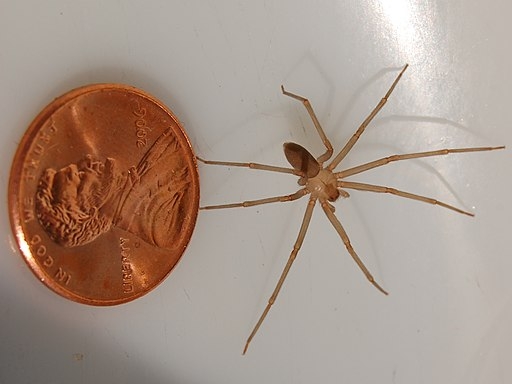
Most spider bites cause no reaction or as much harm as a bee sting or mosquito bite. According to Spider Physiology and Behavior, Volume 41, there were only about 100 recorded deaths from spider bites globally during the entire 20th century! The last death by spider bite in California was in 1976 (due to septicemia). Other arthropod bites, including ticks, fleas, bees, wasps, bedbugs, mosquitoes, deer flies and horse flies, may be mistaken for spider bites.
A bite from black widow venom can cause fever, cramping muscle and joint aches, but it does not cause sores. But they are shy and reluctant to bite; when they do bite, it is often dry (no venom). On the rare occasion someone is injected with their venom, there is an effective antivenom available.
Brown Recluse Spiders
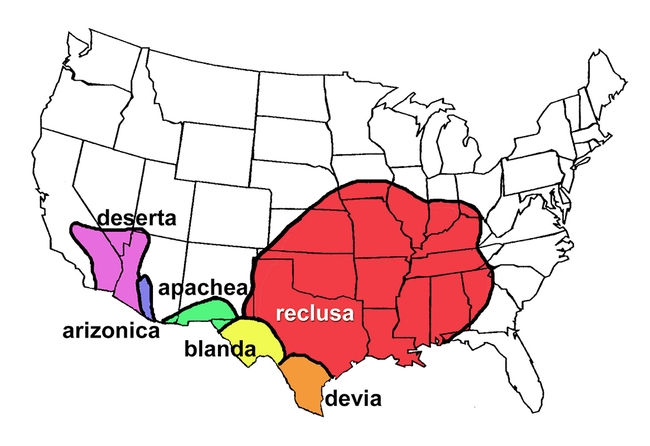
Management
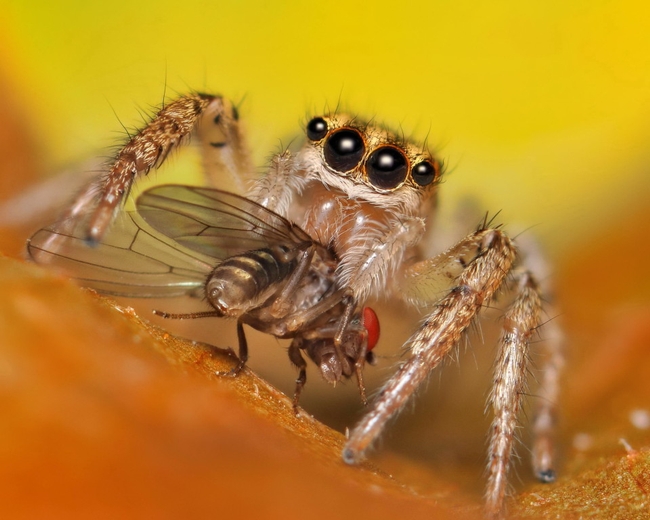
Beneficial Spiders
Spiders are extremely beneficial due to being important predators of pest species. They are often the most important biological control of pests in and around homes, yards, gardens and agriculture. It is estimated that spiders eat 800 million tons of bugs a year. According to Norman Platnick of New York's American Museum of Natural History, “Spiders are primary controllers of insects. Without spiders, all of our crops would be consumed by those pests” and we could face famine.
I have always scooped up spiders I find in my home to carry them outside and will continue to do so. I am removing the spiders from my Halloween décor, since I do not want to continue misrepresenting these valuable creatures.
Resources
- UC Davis Dr. Lynn Kimsey's talk on spiders via UC IPM Urban & Community Webinars: https://www.youtube.com/watch?v=b6ExDP5wNVw
- UC IPM Natural Enemies Gallery https://www2.ipm.ucanr.edu/natural-enemies/spiders/
- UC IPM Quick Tips Card http://ipm.ucanr.edu/PMG/PESTNOTES/pn7442.html#SPIDER
- UC Riverside https://spiders.ucr.edu
- https://www.livescience.com/22122-types-of-spiders.html


